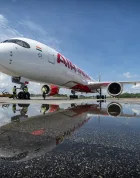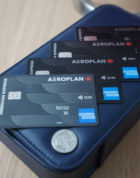People travel with animals for many reasons. For some people with disabilities, a service dog has been specifically and thoroughly trained to assist with daily life and can access all public facilities. Some take their furry friends with them for work or leisure. Or perhaps you are doing a long-distance move, in which travel by land is neither feasible nor possible (in the event of an overseas move).
For my work with a travel agency, I occasionally make arrangements for clients to travel with their animals (pets, service animals, and emotional support animals). What I thought would be a relatively straightforward process sometimes turns into hours of researching aircraft types, time-of-year restrictions, and the fine print of airline policies.

Prior to sharing my experience with booking travel with animals, I would like to address a few concerns that some people have about travelling pets.
The presence of fur or dander in the cabin can trigger some serious allergic reactions. While airlines are careful to say that they cannot guarantee an allergen-free environment, passengers with allergies can call ahead to let the airline know about their allergies. They will inform you of any pets or service animals on board and they will seat you as far away as possible from the animal(s).
Some airlines may rebook you on a different flight without animals, at your discretion. When I have a client with severe allergies, I will contact the airline prior to booking them on a flight to check for animals on board. In the days leading up to the flight, I will recheck several times and, if need be, adjust their itinerary.
There are some terrible stories about animals not surviving travel in the hold of an aircraft. Breed, temperatures, temperament, reaction to stress, and a host of other factors may mean that it is better for Fido or Mittens to stay at home or with a trusted caregiver. I strongly recommend consulting with your veterinarian, as well as doing extensive research into airline policies, prior to considering travel with your pet as baggage or cargo.
In This Post
- Pets in the Cabin
- Service Dogs
- Emotional Support Dogs
- Pets as Checked Baggage
- Pets as Cargo
- Conclusion
Pets in the Cabin
Many airlines, but not all, allow passengers to travel with pets in the cabin. Naturally, this is geared towards smaller dogs and cats, as a Great Dane is unlikely to fit under the seat in front of you.
Pets must be kept in carriers that both allow them to move freely and that can be stowed under the seat. The pet and its carrier count as an article of carry-on luggage, so you’ll have to pack accordingly.
There are a number of restrictions to which you must adhere. These include:
-
Size/type of pet carrier: This also depends on the type of aircraft you’re flying
-
Type of animal: Not all animals are permitted on board (Snakes on a Plane, anyone?)
-
Cabin: Some airlines will not allow pets in certain cabins due to the layout of the seats
-
Number: Airlines limit the number of pets permitted on flights
-
Age: Pets must be of a certain age and meet veterinary requirements
-
Destination: Some countries prohibit or restrict entry of animals
It is certain that you will be charged a pet-in-cabin fee. Fees range from around $50 per direction for a domestic flight to around $100 per direction for an international flight.

Prior to booking, it’s a good idea to contact the airline and inquire about pet-in-cabin space, as there are restrictions for how many animals can be on board. Once you make your booking, you’ll have to call back in to add the pet-in-cabin to your booking. You’ll be asked to provide information about your pet, including:
- Type, breed, age, and weight of animal
- Dimensions and weight of the carrier
Some airlines will collect the fee over the phone, while others will require you to pay at the airport. You won’t be able to get your boarding pass without seeing an agent at the airport, so be sure to arrive early.
On board, your pet will have to remain in its carrier at all times. While that may be the policy, I’ve seen plenty of small dogs being swaddled by passengers and adoring crew members alike, so perhaps the rules are fairly loosely enforced.
The pet-in-cabin policies for the major Canadian airlines can be found here: Air Canada, WestJet, Porter, Flair, and Canadian North.
Service Dogs
Service dogs have been individually trained to assist people with a disability with needs related to their disability by an organization or an individual who specializes in service dog training.
Service dogs are trained to assist with a variety of needs: visual guidance for people with no or reduced vision, auditory alerts for people with no or reduced hearing, mobility assistance for people with reduced mobility or difficulty with balance, alerting others to the onset of a medical condition or event, psychiatric services, and a host of other duties.
Passengers with disabilities are entitled to fly with a service dog in the cabin at no extra cost. In Canada, the Accessible Transportation for Persons with Disabilities Regulations under the Canada Transportation Act defines how airlines (and any other transportation service provider) must make their services accessible to passengers with disabilities. This ranges from how information must be accessible in a variety of formats (e.g., visual, auditory, tactile), staff must be aware of and trained in assisting people with disabilities, and service offerings for people with disabilities.

If you plan to fly with a service dog, airlines ask for at least 48 hours’ advance notice prior to your departure, although they will try to accommodate requests within 48 hours. While most airlines will accept credible verbal assurance that you are travelling with a service dog to assist with a disability, you may be asked to provide proof (e.g., identification card, written confirmation of professional training, identification on harnesses or tags) either in advance or at the airport.
Service dogs accompany passengers with disabilities at the airport and onboard the aircraft, often travelling on the lap or at the feet of the passenger. Airlines will arrange for additional space for your service dog to travel safely and comfortably due to its size. When contacting the airline, they may ask for the breed, length, width, and height to ensure that your service dog will be comfortable.
Information about travelling with service animals for the major Canadian airlines may be found here: Air Canada, WestJet, Porter, Flair, Swoop, and Canadian North.
Emotional Support Dogs
Emotional support animals (ESAs) are permitted by many airlines to travel with passengers with disabilities. Most Canadian airlines only permit dogs as emotional support animals (with the exception of Flair, which also permits cats). Unlike service dogs, emotional support dogs do not have special training to perform specific tasks. Rather, as the name suggests, they provide emotional support for those who require it.

As emotional support dogs do not have specific training, airlines require additional documentation as proof that the animal is fit-to-fly and that you indeed require its presence on board. Porter and Flair require a note from a medical or mental health professional, while Air Canada (who recently updated their emotional support animal requirements) and WestJet require three forms to be submitted at least 48 hours prior to departure:
-
A confirmation of animal behaviour form (filled out by the passenger);
-
A form confirming the diagnosis of a mental-health related disability listed in the Diagnostic and Statistical Manual of Mental Disorders (filled out by a medical/mental-health professional); and
-
A confirmation of veterinary health form (filled out by a veterinarian).
Once the required documentation has been submitted and verified, you are allowed to travel with an emotional support animal. Each time you make a booking, you will have to contact the airline to approve its travel with you. Note that the documents must be resubmitted each year. If your documentation has expired, you will not be permitted to fly with an emotional support animal in the cabin until you submit new documentation.
While there are no specific identification requirements (e.g., harnesses or vests), it is suggested that the animal is identified as an emotional support animal with a harness or collar, and that you keep the documentation with you at all times. The documentation may be requested by airport authorities, airlines, hotels, and any other travel provider.
Emotional support animals may accompany you throughout the airport, in airport lounges, and onboard the aircraft. There will be a unique designator on your ticket and boarding pass that signals that you have been approved to travel with an emotional support animal. Airlines will usually assign you a seat with extra legroom at no cost, especially if your companion needs some extra space to be safe and comfortable.

Without getting into my personal life too much, I have been travelling with my dog Blaze as an ESA for a while. He’s been on a number of cross-country flights with Air Canada and on a handful of train trips between Montreal and Toronto. He’s been fantastic on all trips so far, opting to nap or get chin scratches for the majority of transit time, as well as providing emotional support.

As a medium-sized dog, he does fine in preferred seats in economy, but I find premium economy or North American-style business class seats work best as he can lie down and move around relatively freely (especially when the adjacent seat is empty). Pods are okay, too (they’re pretty much like a den), but due to the flooring being uneven, I think it’s harder for him to get and remain comfortable.

On his first flight, the aircraft was downgraded at the last minute from a Dreamliner to Rouge (yuck). When I requested a different flight due to the aircraft change, as we were flying in economy and the plane was full, the misinformed agent told me not to worry, and that “a preferred seat is a preferred seat.”
Needless to say, that was the last time I’ll let that happen, especially with eUpgrades at my disposal and recent Aeroplan promotions making travel in premium economy or business class much more accessible.

Pets as Checked Baggage
If your pet is too large to fit in the cabin, it may be able to travel on the same flight(s) as you in the baggage compartment. You will need to ensure that your pet is able to sit, stand, and turn around comfortably in its kennel. You will also need to ensure that you adhere to a number of restrictions that may preclude you from being able to travel with your pet in the baggage hold.
For travel between November 1 and March 31 or any time when the exterior temperature is below zero, some aircraft (Canadair Regional Jets, Embraer 175, and Embraer 190) cannot accommodate pets due to the freezing temperatures in the baggage compartment. Similarly, the cargo compartment on Airbus A319s, A320s, A321s, and Boeing 737 Max 8s (if/when they are back in the skies) is not heated, and temperatures can dip to 2˚C. So, you may need to sign a waiver if you choose to check your pet in these situations.
During the peak winter travel season (between December 15 and January 12 with Air Canada and between December 15 and January 6 with WestJet), pets are not eligible to be checked in the luggage compartment. Due to the amount of passengers and luggage on board, there simply isn’t enough space to ensure your pets comfort and safety in the baggage hold.

For summer travel, some baggage compartments are neither well-ventilated nor climate-controlled, which could expose your beloved pet to some stressful (and possibly dangerous or even lethal) heat. To minimize the risk, airlines recommend that you travel early in the day or late in the evening, taking direct routes and minimizing connections wherever possible. Of course, another alternative is to leave your pet with a trusted pet sitter while you are away on holidays.
If you have a short- or snub-nosed pet, which are more susceptible to heat stroke and breathing problems, it won’t be able to travel in the baggage compartment. If you have a dog that’s classified as a strong breed, you’ll need to make sure to follow guidelines for reinforced crates and containers, as the airline may otherwise refuse travel. If the total weight of the pet and carrier or if the maximum allowable dimensions for the carrier are exceeded, you’ll need to ship the pet by cargo (see below).
If you’ve managed to adhere to the airline’s policies for travelling with your pet as checked baggage, it’s a good idea to call them to confirm the details prior to making your booking. Or, since cancellations are free within 24 hours of booking, you can call in after making your booking to confirm your pet (and cancel for free as needed).
Once again, ExpertFlyer is a very useful resource for planning travel for pets in the baggage hold, as the flight search gives you a lot of information. Once you have familiarized yourself with the time-of-year and aircraft restrictions, reading through the results page will allow you to select ideal flights for you and your pet to travel on.

Pets as Cargo
If you are unable to travel with your pet in the cabin or check it in the baggage compartment, or if you are travelling separately from your pet, shipping it as cargo is another possibility. You’ll also have to go via cargo if the carrier exceeds the maximum dimensions or if the combined weight of the pet and the carrier exceed the maximum for checked baggage. If you have an exotic animal, cargo may be the only option if it needs to travel.
(At the time of writing, Air Canada is not accepting cats or dogs as cargo due to the COVID-19 pandemic, and WestJet is only accepting kennels within 48 hours of departure.)
Similar to travelling with pets as checked baggage, shipping pets as cargo is subject to a number of restrictions. You will want to spend time combing through Air Canada Cargo’s restrictions and WestJet Cargo’s restrictions well in advance of shipping your pet. You will require veterinary certificates dated within 30 days of departure, so be sure to book an appointment with your veterinarian accordingly.

Once you have prepared your pet for shipping, it will need to be dropped off at the airline’s cargo building on the airport property, which is usually separate from the main terminal. If you’re shipping from a major airport, you will likely be treated to some close-up views of aircraft taking off or landing, which I always enjoy.
If your pet requires an overnight or comfort stop en route to its final destination, the airline may be able to accommodate a more comfortable experience. Air Canada Cargo has a kennelling facility at Toronto Pearson where your pet will be walked, fed, and looked after by employees trained in animal care. WestJet Cargo’s website mentions the possibility of a comfort stop in Toronto or Calgary, and to contact them for more information and availability.
As with shipping any cargo, you’ll need to provide detailed information about the shipper and receiver. In the event of a delay due to weather or otherwise, the airline will need to get in touch with someone to discuss options, so be sure to provide accurate information.
Conclusion
Flying with a pet-in-cabin is a great option for those who choose to bring their furry friends with them for work and play. The fee is another way for airlines to squeeze out a few more bucks without really providing an extra service. I’m sure if most pet owners had the choice, they’d bring their pets with them everywhere they go.
People with disabilities have the right to be accompanied by animals in public spaces where pets aren’t usually allowed to be. Airlines are required to provide accessibility accommodations, including ensuring service animals and emotional support animals are safe and comfortable aboard the aircraft.
If you are unable to bring your animal on board with you, then shipping your animal as checked baggage or as cargo can be a helpful option. There are many regulations to follow, though, so it may take a while to find a solution that works for you (and, of course, your four-legged friend).
If pets had their way, I’m sure they’d choose to be with their humans wherever they go. Has your pet been on any grand adventures? For people who travel with service animals, what has your experience been like with airlines? Feel free to leave a comment below.




















